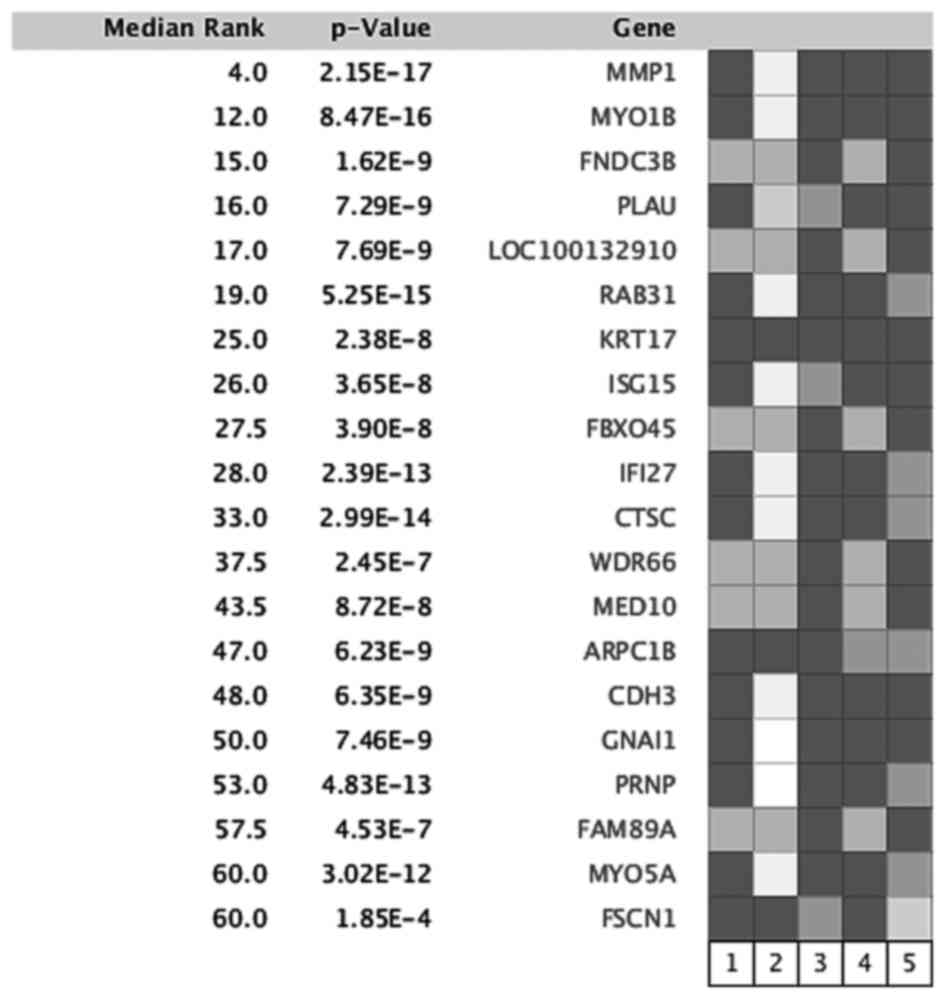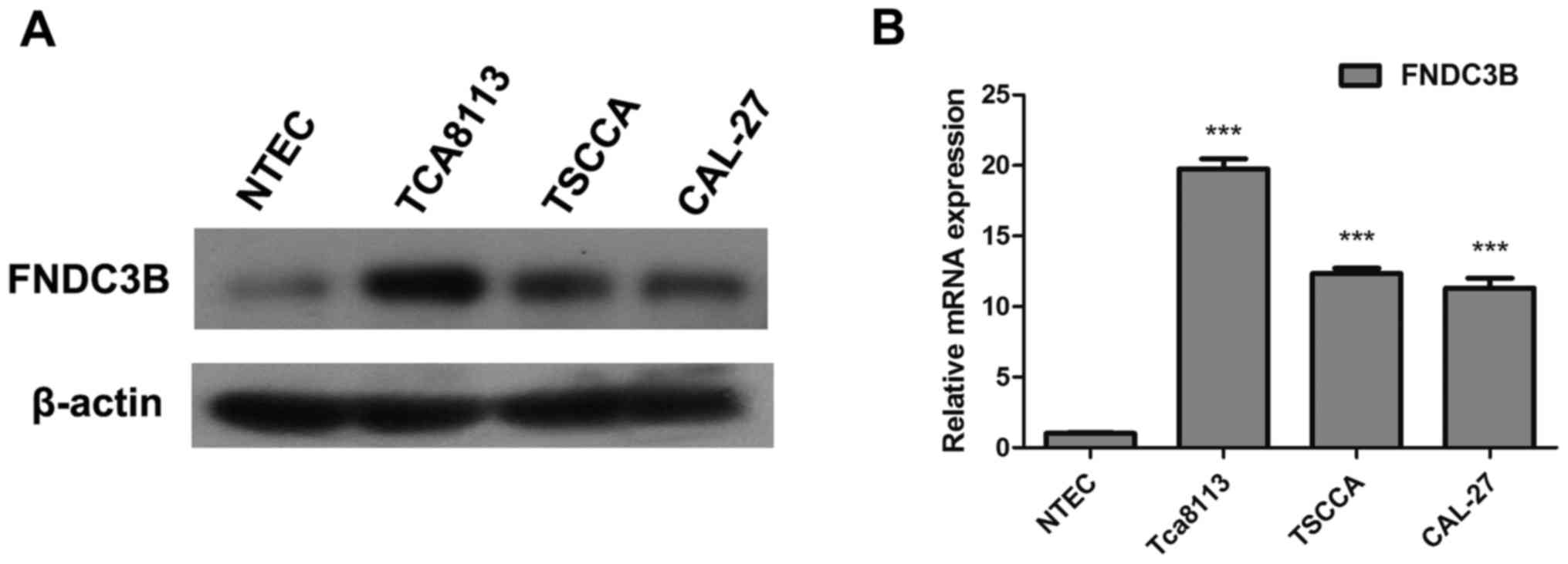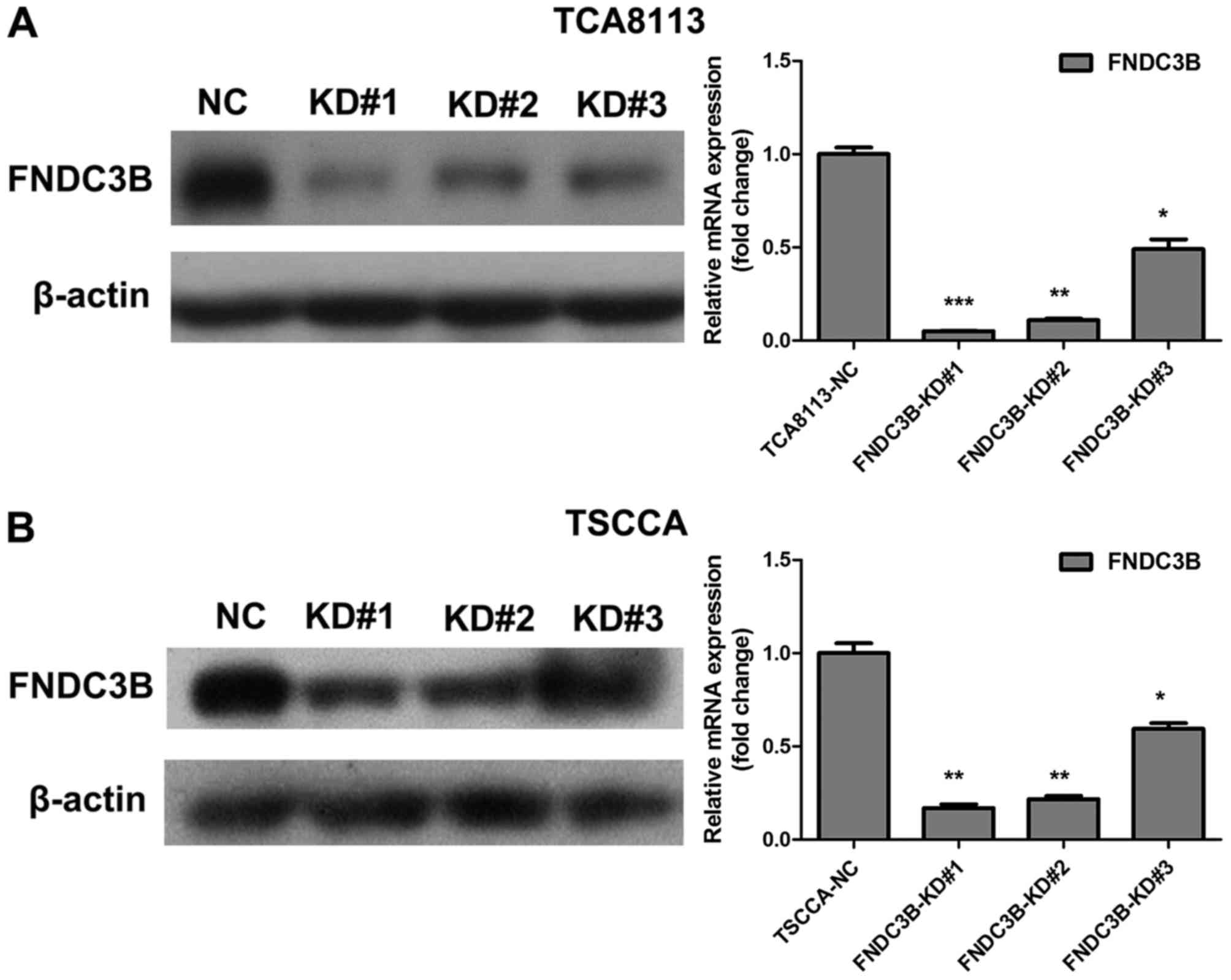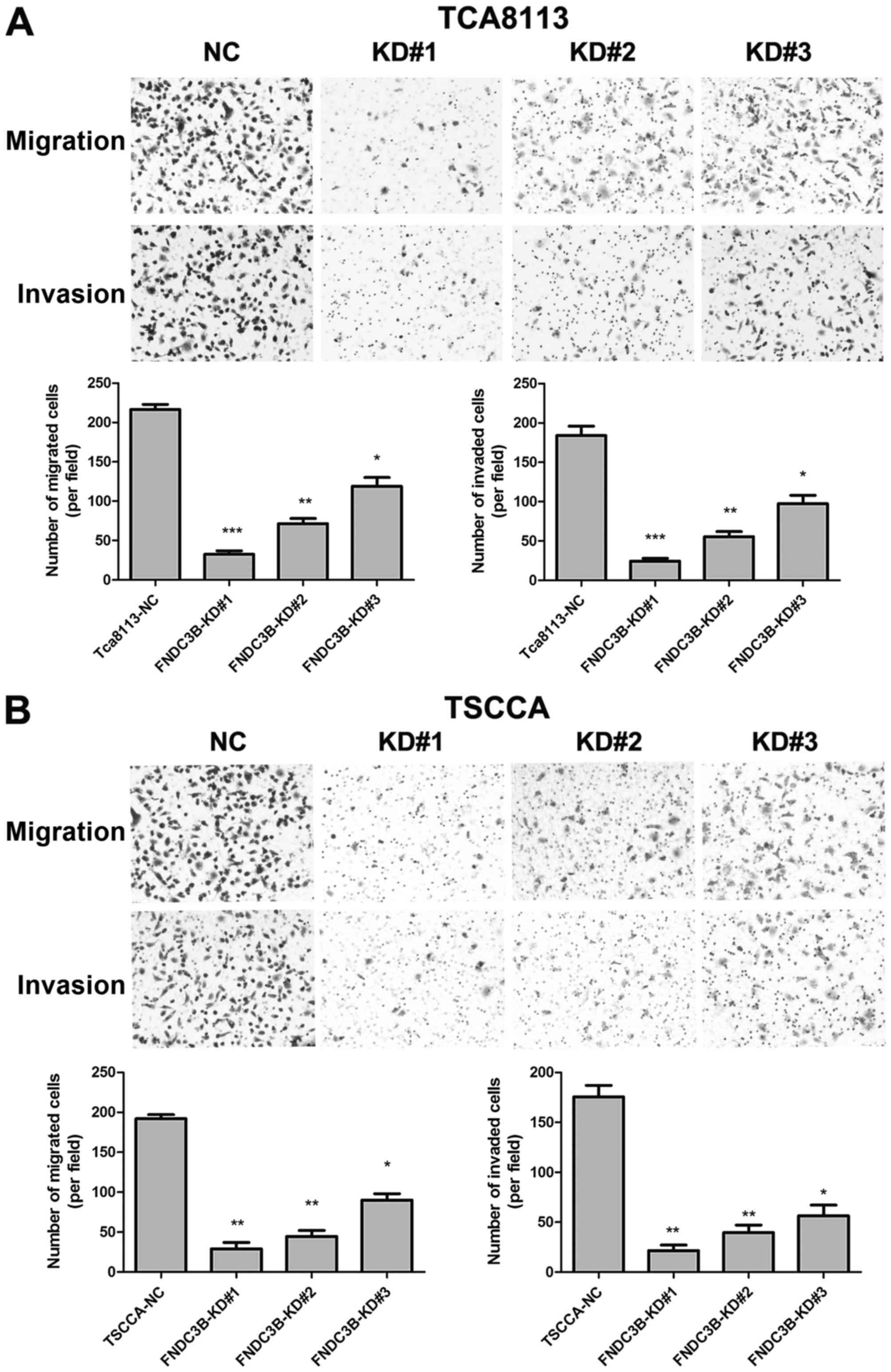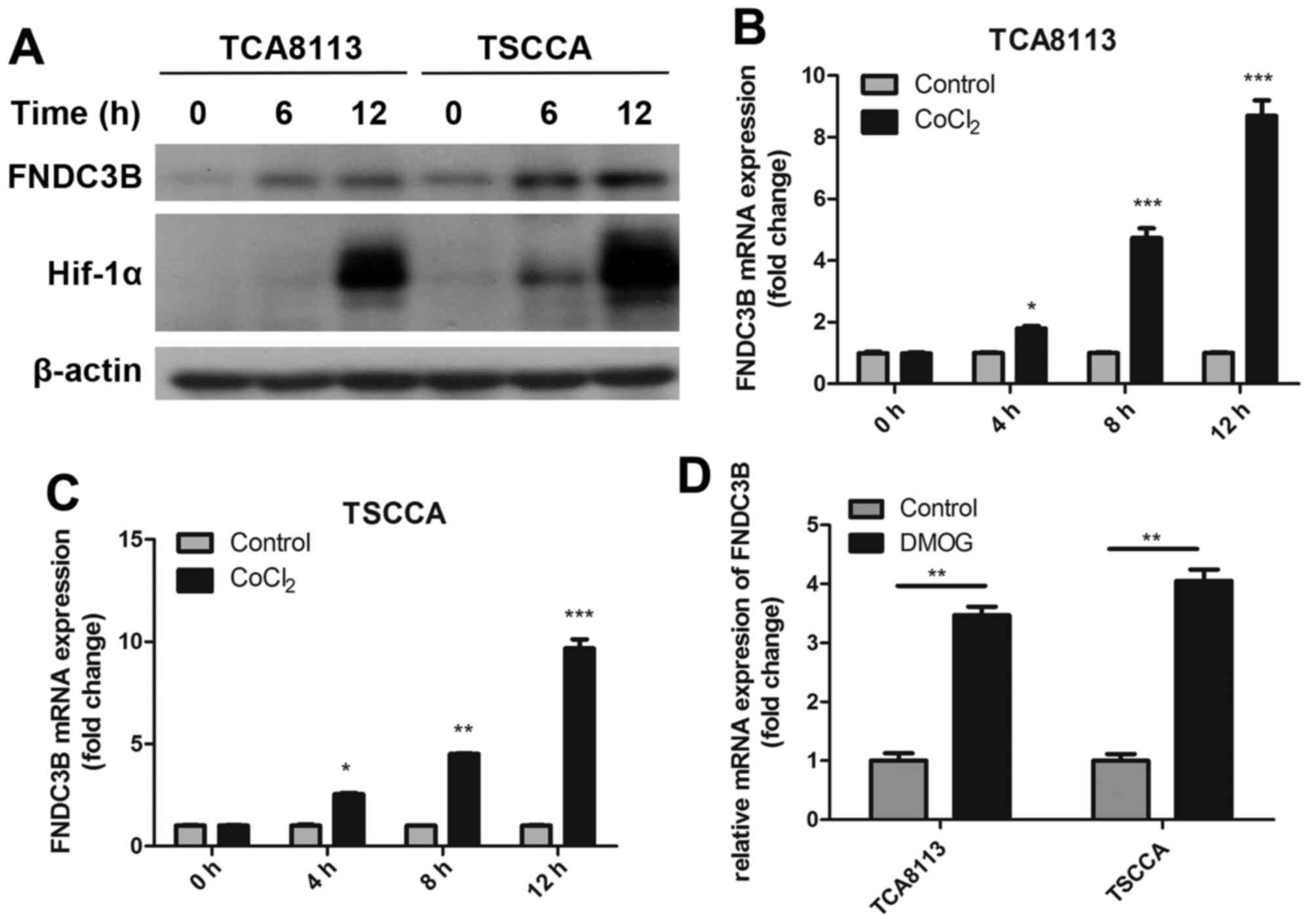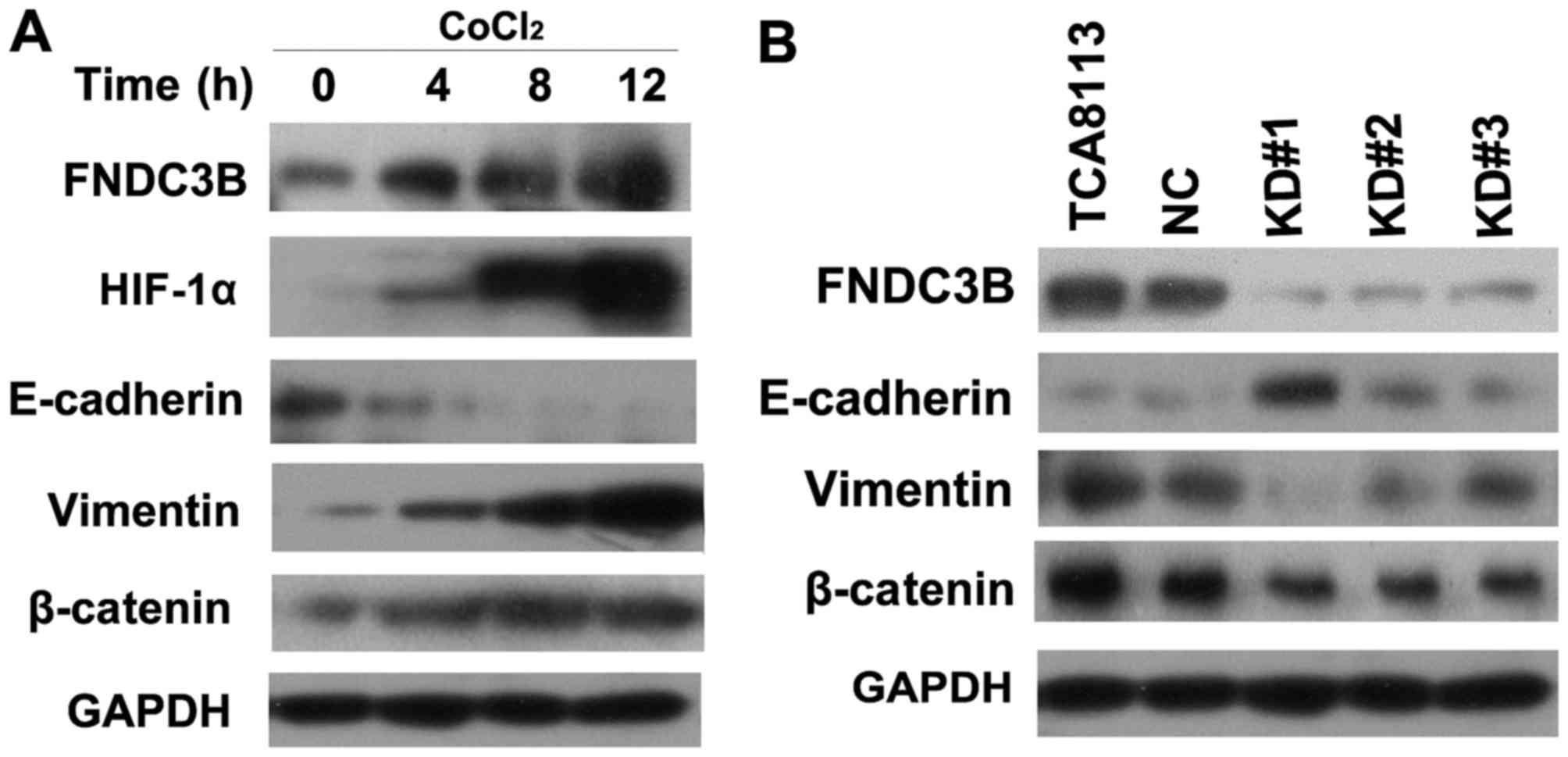|
1
|
Torre LA, Bray F, Siegel RL, Ferlay J,
Lortet-Tieulent J and Jemal A: Global cancer statistics, 2012. CA
Cancer J Clin. 65:87–108. 2015. View Article : Google Scholar : PubMed/NCBI
|
|
2
|
Otsuka Y, Sato H, Oikawa T, Onodera Y, Nam
JM, Hashimoto A, Fukunaga K, Hatanaka KC, Hatanaka Y, Matsuno Y, et
al: High expression of EPB41L5, an integral component of the
Arf6-driven mesenchymal program, correlates with poor prognosis of
squamous cell carcinoma of the tongue. Cell Commun Signal.
14:282016. View Article : Google Scholar : PubMed/NCBI
|
|
3
|
Burusapat C, Jarungroongruangchai W and
Charoenpitakchai M: Prognostic factors of cervical node status in
head and neck squamous cell carcinoma. World J Surg Oncol.
13:512015. View Article : Google Scholar : PubMed/NCBI
|
|
4
|
Haksever M, Inançlı HM, Tunçel U,
Kürkçüoğlu SS, Uyar M, Genç O and Irkkan C: The effects of tumor
size, degree of differentiation, and depth of invasion on the risk
of neck node metastasis in squamous cell carcinoma of the oral
cavity. Ear Nose Throat J. 91:130–135. 2012.PubMed/NCBI
|
|
5
|
Feng HJ, Bao YL, Liang ZP, Zhao FP, Xu SE,
Xu W, Zhao C and Qin G: Silencing of FANCD2 enhances the
radiosensitivity of metastatic cervical lymph node-derived head and
neck squamous cell carcinoma HSC-4 cells. Int J Oncol.
50:1241–1250. 2017. View Article : Google Scholar
|
|
6
|
Katoh D, Nishizuka M, Osada S and Imagawa
M and Imagawa M: Fad104, a positive regulator of adipocyte
differentiation, suppresses invasion and metastasis of melanoma
cells by inhibition of STAT3 activity. PLoS One. 10:e01171972015.
View Article : Google Scholar : PubMed/NCBI
|
|
7
|
Wang HY, McMahon C, Ali SM, Young LE,
Yekezare S, Ross JS and Ball ED: Novel FNDC3B and MECOM fusion and
WT1 L378fs* 7 frameshift mutation in an acute myeloid leukaemia
patient with cytomorphological and immunophenotypic features
reminiscent of acute promyelocytic leukaemia. Br J Haematol.
172:987–990. 2016. View Article : Google Scholar : PubMed/NCBI
|
|
8
|
Nishizuka M, Kishimoto K, Kato A, Ikawa M,
Okabe M, Sato R, Niida H, Nakanishi M, Osada S and Imagawa M:
Disruption of the novel gene fad104 causes rapid postnatal death
and attenuation of cell proliferation, adhesion, spreading and
migration. Exp Cell Res. 315:809–819. 2009. View Article : Google Scholar : PubMed/NCBI
|
|
9
|
Kishimoto K, Nishizuka M, Ueda T, Kajita
K, Ugawa S, Shimada S, Osada S and Imagawa M: Indispensable role of
factor for adipocyte differentiation 104 (fad104) in lung
maturation. Exp Cell Res. 317:2110–2123. 2011. View Article : Google Scholar : PubMed/NCBI
|
|
10
|
Urtreger AJWS, Werbajh SE, Verrecchia F,
Mauviel A, Puricelli LI, Kornblihtt AR and Bal de Kier Joffé ED:
Fibronectin is distinctly downregulated in murine mammary
adenocarcinoma cells with high metastatic potential. Oncol Rep.
16:1403–1410. 2006.PubMed/NCBI
|
|
11
|
Lin CH, Lin YW, Chen YC, Liao CC, Jou YS,
Hsu MT and Chen CF: FNDC3B promotes cell migration and tumor
metastasis in hepatocellular carcinoma. Oncotarget. 7:49498–49508.
2016.PubMed/NCBI
|
|
12
|
Yang Y, Li D, Yang Y and Jiang G: An
integrated analysis of the effects of microRNA and mRNA on
esophageal squamous cell carcinoma. Mol Med Rep. 12:945–952. 2015.
View Article : Google Scholar : PubMed/NCBI
|
|
13
|
Xu H, Hu Y and Qiu W: Potential mechanisms
of microRNA-129-5p in inhibiting cell processes including
viability, proliferation, migration and invasiveness of
glioblastoma cells U87 through targeting FNDC3B. Biomed
Pharmacother. 87:405–411. 2017. View Article : Google Scholar : PubMed/NCBI
|
|
14
|
Stangeland B, Mughal AA, Grieg Z, Sandberg
CJ, Joel M, Nygård S, Meling T, Murrell W, Vik Mo EO and Langmoen
IA: Combined expressional analysis, bioinformatics and targeted
proteomics identify new potential therapeutic targets in
glioblastoma stem cells. Oncotarget. 6:26192–26215. 2015.
View Article : Google Scholar : PubMed/NCBI
|
|
15
|
Sawey ET, Chanrion M, Cai C, Wu G, Zhang
J, Zender L, Zhao A, Busuttil RW, Yee H, Stein L, et al:
Identification of a therapeutic strategy targeting amplified FGF19
in liver cancer by Oncogenomic screening. Cancer Cell. 19:347–358.
2011. View Article : Google Scholar : PubMed/NCBI
|
|
16
|
Ibrahim AA, Schmithals C, Kowarz E,
Köberle V, Kakoschky B, Pleli T, Kollmar O, Nitsch S, Waidmann O,
Finkelmeier F, et al: Hypoxia causes down-regulation of Dicer in
hepatocellular carcinoma, which is required for up-regulation of
hypoxia inducible factor 1alpha and epithelial-mesenchymal
transition. Clin Cancer Res. 23:3896–3905. 2017. View Article : Google Scholar : PubMed/NCBI
|
|
17
|
Ye LY, Chen W, Bai XL, Xu XY, Zhang Q, Xia
XF, Sun X, Li GG, Hu QD, Fu QH, et al: Hypoxia-induced
epithelial-to-mesenchymal transition in hepatocellular carcinoma
induces an immunosuppressive tumor microenvironment to promote
metastasis. Cancer Res. 76:818–830. 2016. View Article : Google Scholar : PubMed/NCBI
|
|
18
|
Zhong Z, Hu Z, Jiang Y, Sun R, Chen X, Chu
H, Zeng M and Sun C: Interleukin-11 promotes epithelial-mesenchymal
transition in anaplastic thyroid carcinoma cells through
PI3K/Akt/GSK3β signaling pathway activation. Oncotarget.
7:59652–59663. 2016. View Article : Google Scholar : PubMed/NCBI
|
|
19
|
Wu Y, Wang Y, Lin Y, Liu Y, Wang Y, Jia J,
Singh P, Chi YI, Wang C, Dong C, et al: Dub3 inhibition suppresses
breast cancer invasion and metastasis by promoting Snail1
degradation. Nat Commun. 8:142282017.doi: 10.1038/ncomms14228.
View Article : Google Scholar : PubMed/NCBI
|
|
20
|
Zhang T, Liang L, Liu X, Wu JN, Chen J, Su
K, Zheng Q, Huang H and Liao GQ: TGFβ1-Smad3-Jagged1-Notch1-Slug
signaling pathway takes part in tumorigenesis and progress of
tongue squamous cell carcinoma. J Oral Pathol Med. 45:486–493.
2016. View Article : Google Scholar : PubMed/NCBI
|
|
21
|
Shi ZM, Wang L, Shen H, Jiang CF, Ge X, Li
DM, Wen YY, Sun HR, Pan MH, Li W, et al: Downregulation of miR-218
contributes to epithelial-mesenchymal transition and tumor
metastasis in lung cancer by targeting Slug/ZEB2 signaling.
Oncogene. 36:2577–2588. 2017. View Article : Google Scholar : PubMed/NCBI
|
|
22
|
Edge SB, Byrd DR, Compton CC, Fritz AG,
Greene FL and Trotti A: AJCC Cancer Staging Manual. 7th. Springer;
New York: 2010
|
|
23
|
Estilo CL, O-charoenrat P, Talbot S, Socci
ND, Carlson DL, Ghossein R, Williams T, Yonekawa Y, Ramanathan Y,
Boyle JO, et al: Oral tongue cancer gene expression profiling:
Identification of novel potential prognosticators by
oligonucleotide microarray analysis. BMC Cancer. 9:112009.
View Article : Google Scholar : PubMed/NCBI
|
|
24
|
Kuriakose MA, Chen WT, He ZM, Sikora AG,
Zhang P, Zhang ZY, Qiu WL, Hsu DF, McMunn-Coffran C, Brown SM, et
al: Selection and validation of differentially expressed genes in
head and neck cancer. Cell Mol Life Sci. 61:1372–1383. 2004.
View Article : Google Scholar : PubMed/NCBI
|
|
25
|
Pyeon D, Newton MA, Lambert PF, den Boon
JA, Sengupta S, Marsit CJ, Woodworth CD, Connor JP, Haugen TH,
Smith EM, et al: Fundamental differences in cell cycle deregulation
in human papillomavirus-positive and human papillomavirus-negative
head/neck and cervical cancers. Cancer Res. 67:4605–4619. 2007.
View Article : Google Scholar : PubMed/NCBI
|
|
26
|
Talbot SG, Estilo C, Maghami E, Sarkaria
IS, Pham DK, O-charoenrat P, Socci ND, Ngai I, Carlson D, Ghossein
R, et al: Gene expression profiling allows distinction between
primary and metastatic squamous cell carcinomas in the lung. Cancer
Res. 65:3063–3071. 2005. View Article : Google Scholar : PubMed/NCBI
|
|
27
|
Ye H, Yu T, Temam S, Ziober BL, Wang J,
Schwartz JL, Mao L, Wong DT and Zhou X: Transcriptomic dissection
of tongue squamous cell carcinoma. BMC Genomics. 9:692008.
View Article : Google Scholar : PubMed/NCBI
|
|
28
|
Książkiewicz M, Markiewicz A and Zaczek
AJ: Epithelial-mesenchymal transition: A hallmark in metastasis
formation linking circulating tumor cells and cancer stem cells.
Pathobiology. 79:195–208. 2012. View Article : Google Scholar : PubMed/NCBI
|
|
29
|
Nieto MA: Context-specific roles of EMT
programmes in cancer cell dissemination. Nat Cell Biol. 19:416–418.
2017. View
Article : Google Scholar : PubMed/NCBI
|
|
30
|
Cai C, Rajaram M, Zhou X, Liu Q, Marchica
J, Li J and Powers RS: Activation of multiple cancer pathways and
tumor maintenance function of the 3q amplified oncogene FNDC3B.
Cell Cycle. 11:1773–1781. 2012. View
Article : Google Scholar : PubMed/NCBI
|



